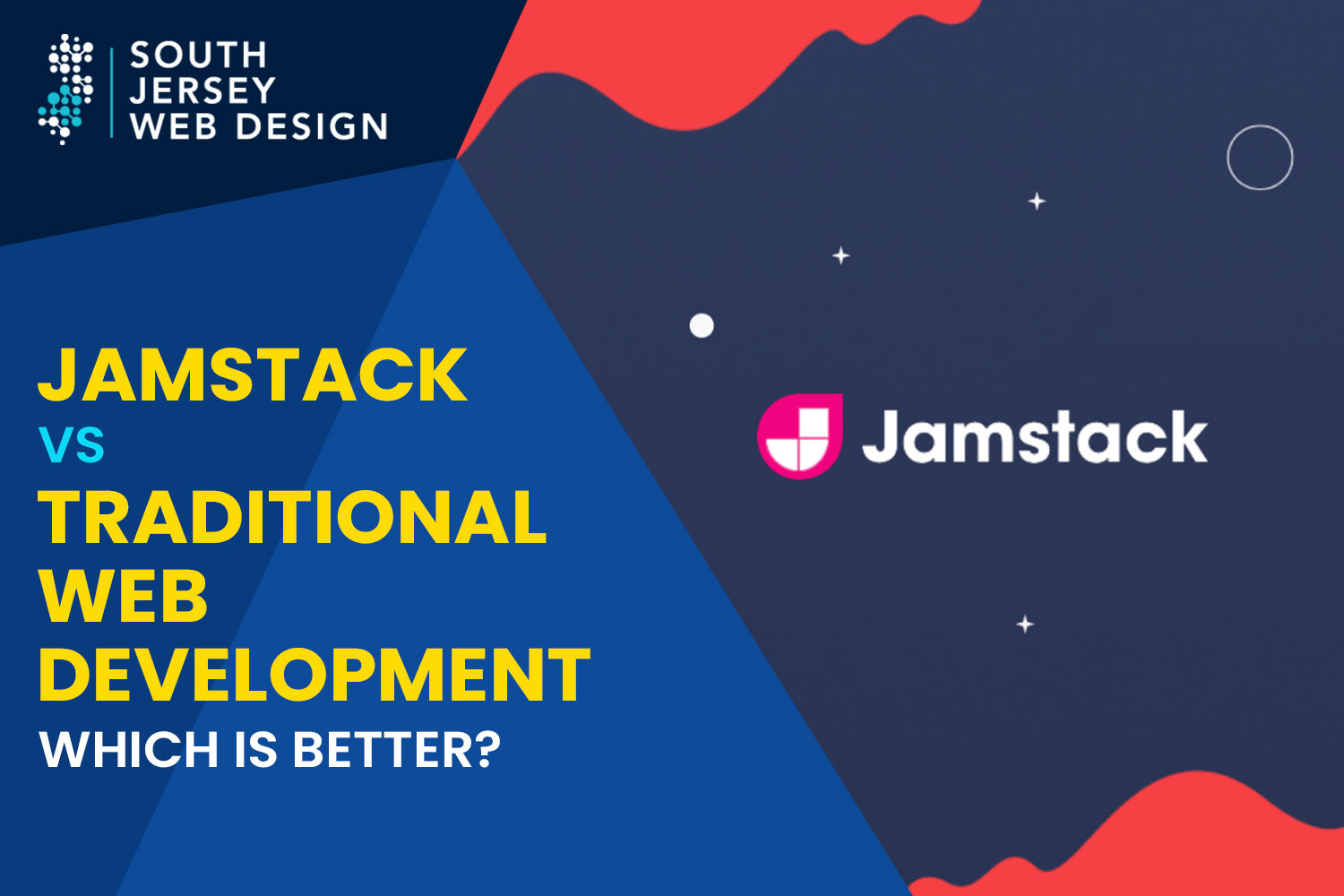JAMSTACK vs Traditional Web Development Which is better?

The Power of AI in Customer Segmentation and Targeted Marketing for Ecommerce
June 19, 2023
How to optimize your WordPress site for search engines
July 12, 2023
Introduction
In the ever-evolving landscape of web development, two prominent methodologies have emerged as frontrunners: Jamstack and traditional web development. This comprehensive blog post aims to delve into the nuances of these approaches, highlighting their key differentiators, advantages, and disadvantages. By the end of this article, you’ll gain a thorough understanding of the Jamstack paradigm and its comparisons with traditional web development.
Understanding Traditional Web Development
Traditional web development typically follows a server-centric model, where the server dynamically generates HTML content in response to user requests. This process involves utilizing backend technologies like PHP, Python, or Java, along with a database system to process data and produce complete HTML documents for the client’s browser.
Key Characteristics of Traditional Web Development
1. Server-Centric Architecture
Traditional web development revolves around server-side processing to generate and deliver HTML content to clients.
2. Monolithic Nature
The entire application, including frontend and backend logic, is bundled together, resulting in a tightly coupled architecture.
3. Scalability Challenges
Scaling traditional web applications can be complex, as it involves scaling both the application servers and associated databases.
4. Higher Security Risks
Traditional web development exposes the server to potential security vulnerabilities due to direct database interactions and server-side processing.
Introducing Jamstack
Jamstack represents a paradigm shift in web development by decoupling the frontend from the backend. It focuses on pre-rendered static content, reusable APIs, and client-side JavaScript for dynamic functionalities. Jamstack architecture aims to provide superior performance, enhanced security, scalability, and developer experience.
Key Characteristics of Jamstack
1. Static Site Generation (SSG)
Jamstack pre-builds content as static HTML files during the build process, eliminating the need for server-side rendering.
2. CDN-Driven Delivery
The pre-rendered files are deployed to a content delivery network (CDN), ensuring rapid and efficient content delivery to users worldwide.
3. API-First Approach
Backend functionality is abstracted into reusable APIs, enabling client-side JavaScript to fetch data dynamically.
4. Enhanced Performance
Jamstack websites serve content directly from CDNs, resulting in faster page load times and reduced latency.
5. Enhanced Security
By reducing the attack surface, Jamstack enhances security by eliminating direct database interactions and minimizing server-side processing.
6. Scalability Benefits
Leveraging CDNs for global content delivery, Jamstack architecture inherently provides scalability benefits.
7. Streamlined Development Workflow
Jamstack promotes version-controlled source code, automated build processes, and seamless deployment, resulting in efficient development workflows.
Comparing Jamstack and Traditional Web Development
1. Performance
Jamstack websites outperform traditional web applications due to pre-rendered static content and CDN-driven delivery. Traditional web development often involves server-side processing, potentially leading to performance bottlenecks.
2. Scalability
Jamstack architecture offers inherent scalability advantages by leveraging CDNs for global content delivery. Scaling traditional web applications may require more complex infrastructure adjustments due to their monolithic nature.
3. Development Workflow
Jamstack enables streamlined development workflows with version-controlled source code, automated builds, and rapid deployment. Traditional web development may involve complex setups and dependencies, resulting in longer development cycles.
4. Maintenance and Updates
Jamstack sites are easier to maintain as they involve fewer moving parts. Traditional web applications may require more effort for updates, especially when modifying backend functionality.
5. Database Interaction
Traditional web development often involves direct database interactions from the server-side. In Jamstack, APIs abstract the database functionality, which can be an advantage for security but may require additional API development work.
6. Dynamic Functionality
While Jamstack can handle many dynamic functionalities using client-side JavaScript and APIs, highly interactive applications may still require server-side processing. Traditional web development offers more flexibility in implementing complex dynamic features that rely on server-side logic.
7. SEO-Friendliness
Jamstack websites tend to perform better in terms of search engine optimization (SEO) due to their pre-rendered static content, which can be easily crawled and indexed by search engines. Traditional web development may require additional SEO optimizations for dynamic content.
8. Cost Efficiency
Jamstack websites can be cost-effective as they require fewer server resources for hosting and scaling. Traditional web development may involve higher infrastructure costs due to the need for robust servers to handle dynamic content generation.
9. Third-Party Integrations
Traditional web development often relies on server-side integrations with various third-party services and systems. Jamstack can achieve similar integrations through client-side JavaScript and APIs, although certain limitations may exist depending on the specific integration requirements.
10. Developer Skill Set
Traditional web development typically requires knowledge of server-side languages and frameworks. Jamstack, on the other hand, emphasizes frontend technologies and API development. Developers proficient in JavaScript, HTML, and CSS can easily adapt to Jamstack projects.
Conclusion
As the web development landscape evolves, both Jamstack and traditional web development offer unique approaches to building robust and dynamic web applications. Jamstack architecture excels in terms of performance, scalability, security, and streamlined development workflows. It proves particularly effective for content-driven websites, e-commerce platforms, and applications that don’t heavily rely on server-side processing. However, traditional web development remains a viable choice for highly interactive applications that require extensive server-side logic and dynamic functionalities. Ultimately, the selection between Jamstack and traditional web development depends on specific project requirements, scalability needs, development preferences, and the balance between static and dynamic content. By considering these factors, developers can make an informed decision to build web applications that align with their goals and deliver exceptional user experiences.



